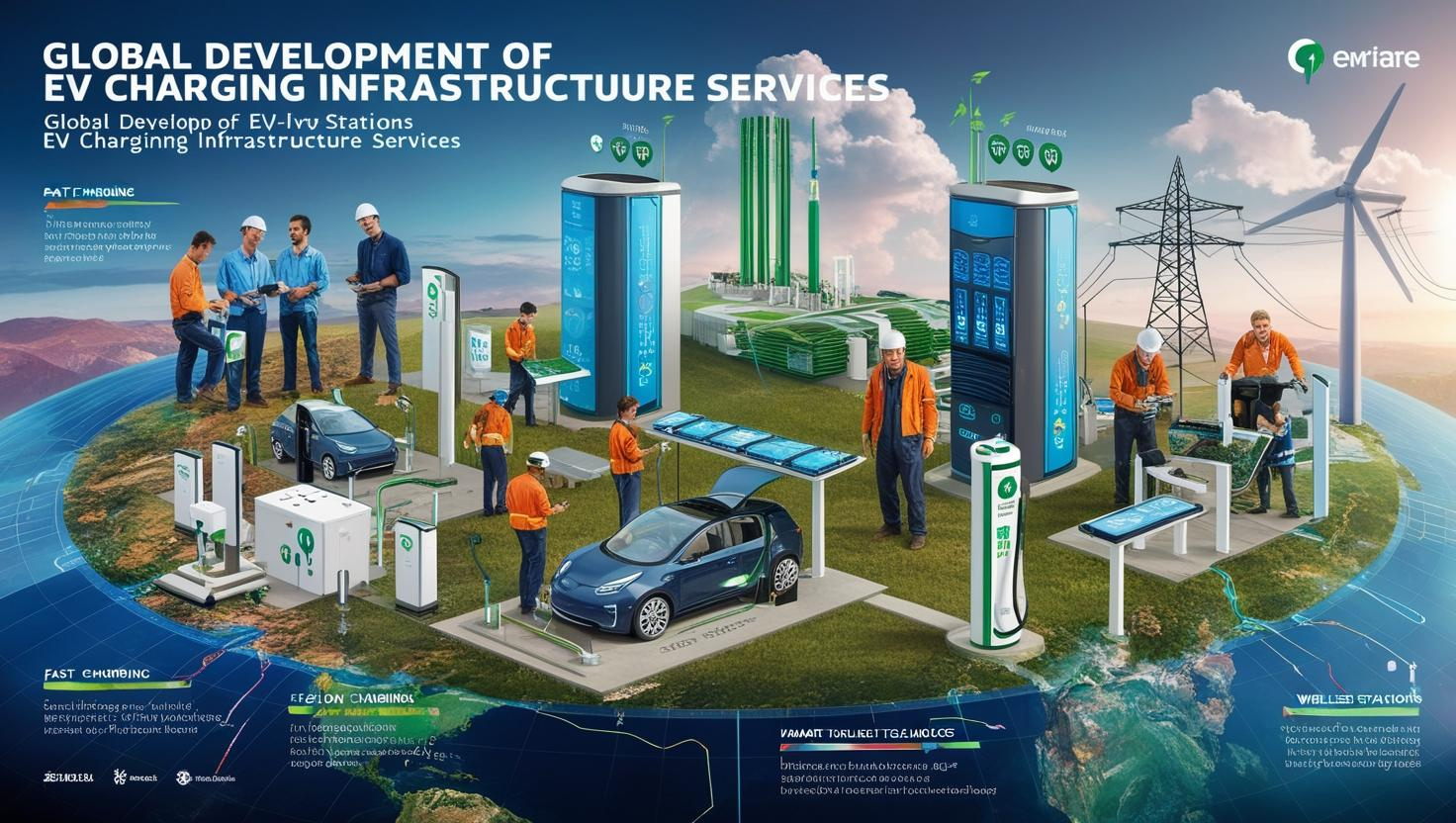From 2025 to 2031, the Global EV Charging Infrastructure Development Services industry is set for sustained exponential growth, driven by government mandates, grid digitization, e-mobility adoption, and capital inflow from utilities, OEMs, and private equity. The industry will transform from hardware-focused deployment to grid-integrated, software-optimized, and monetized energy systems.
EV adoption will cross 30% of new vehicle sales globally by 2030, necessitating more than 100 million public and private charging points. Infrastructure services—encompassing site development, grid interfacing, equipment integration, maintenance, and energy optimization—will represent a critical enabler and revenue generator.
2. Market Size & Forecast
| Year | Market Size (USD Billion) | CAGR (2025–2031) |
|---|---|---|
| 2025 | 15.8 | |
| 2027 | 31.5 | ~22.5% |
| 2031 | 69.4 |
Growth is driven by:
-
Public and private charging network expansion (urban, highway, fleet).
-
Site design, grid integration, energy storage/solar bundling.
-
Transition from CAPEX to OPEX/revenue-sharing service models.
3. Key Segments and Value Drivers
A. Service Segmentation
-
Site Feasibility & Engineering Design
-
GIS-based location modeling, traffic and grid proximity analytics.
-
Turnkey engineering with 3D simulation and digital twin modeling.
-
-
Utility Coordination & Grid Services
-
Grid connection design, load forecasting, interconnection permitting.
-
Emerging services: Demand-side response, V2G (Vehicle-to-Grid).
-
-
Installation & Commissioning
-
Rapid-deployment prefab solutions.
-
DC fast charging (350kW+), high-voltage AC, megawatt-scale truck charging.
-
-
Software & Energy Management
-
Load balancing, renewable energy integration, predictive maintenance.
-
AI-based charger utilization optimization.
-
-
Lifecycle O&M Services
-
Remote diagnostics, SLAs for uptime >99%.
-
Embedded cybersecurity for connected chargers.
-
B. Business Models
-
EPC + O&M Contracts
-
Charge-as-a-Service (CaaS)
-
Energy-as-a-Service (EaaS) with onsite renewables + storage
-
Revenue-share models with property owners/fleet operators
4. Regional Outlook
North America
-
$25B+ market by 2031. IRA tax incentives, NEVI funding, state mandates.
-
Fleet electrification (Amazon, FedEx, UPS) driving depot-centric builds.
Europe
-
Mandated charging density targets under AFIR.
-
High penetration of smart charging + grid services (especially Germany, Netherlands, Nordics).
China
-
Largest deployment volume. Vertical integration across charging operators, utilities, and OEMs.
-
Urban ultra-fast charging + integrated solar-EV charging hubs.
India & Southeast Asia
-
Government push + 2/3-wheeler dominance.
-
Focus on low-cost, dense urban deployment. High potential for mobile and battery-swapping solutions.
5. Technology & Infrastructure Trends (2025–2031)
-
Megawatt Charging Systems (MCS) for HDVs, standardized by 2027.
-
AI-driven network orchestration for load shifting and grid responsiveness.
-
Solid-state transformers & bidirectional inverters integrated into DC fast chargers.
-
Cyber-secure edge computing at charge points for real-time analytics.
-
Onsite energy + microgrids bundled with chargers for resilience and lower TCO.
6. Investment and M&A Outlook
-
PE and infra funds entering long-term O&M-backed revenue models.
-
Strategic vertical integration (e.g., utilities acquiring EPC providers or vice versa).
-
High M&A potential in software platforms and grid service integrators.
7. Strategic Imperatives for Decision Makers
-
Capitalize on EPC + SaaS bundling to control long-term revenue streams.
-
Develop utility partnerships early to reduce grid interconnection timelines and costs.
-
Design infrastructure for V2G-readiness and dynamic pricing environments.
-
Prioritize modularity and prefabrication to reduce deployment timelines by 30–40%.
-
Invest in regional adaptability—regulations, power market structures, vehicle mix.
8. Risks & Mitigation
| Risk Category | Description | Mitigation |
|---|---|---|
| Grid Congestion | High peak demand at cluster sites | Co-locate storage, demand response, V2G |
| Policy Shifts | Regulatory volatility | Focus on flexible, multi-use infrastructure |
| Tech Obsolescence | Rapid charger evolution | Adopt modular hardware architecture |
| Data & Cybersecurity | Hacking of smart chargers | Enforce end-to-end encryption + OTA updates |
Conclusion
Between 2025 and 2031, EV Charging Infrastructure Development Services will evolve from a construction-heavy industry into a grid-interactive, energy-optimized, digitally managed ecosystem. Strategic focus must shift from simple charger deployment to lifetime service monetization, integration with energy markets, and software-led differentiation.
Decision-makers must treat EV charging infrastructure not as a one-time project, but as a recurring revenue asset class tied to the future of energy and mobility.
